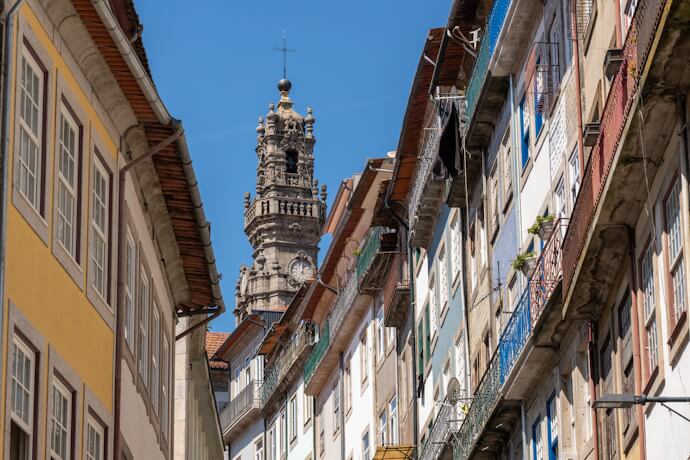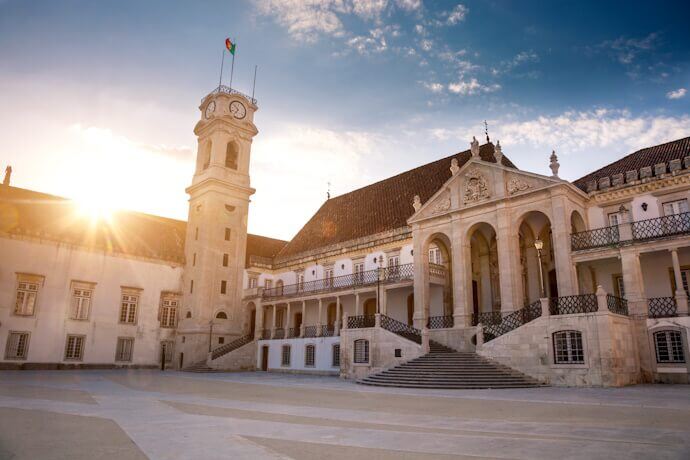Attention, history lovers: we invite you to uncover 10 amazing monuments that are a testament to Portugal’s rich historical tapestry. Each site holds secrets of the past, waiting to be revealed. As you explore these remarkable landmarks, we can guarantee you will witness wonderful architecture and also dive deep into the stories of explorers, kings, and cultures that have shaped Portugal through the ages.
Join us on this fascinating journey passing and let your passion for history come alive!
1. Clérigos Tower
Let’s start by the iconic northern city of Porto, where you will find the Clérigos Tower, or "Torre dos Clérigos", rising majestically over the city’s skyline. This 76-metre-high baroque bell tower offers a spectacular 360-degree view of Porto and the surrounding region.
Built in the 18th century, this tower is part of the Clérigos Church, a masterpiece designed by the Italian architect Nicolau Nasoni. His flair for dramatic, ornate design is evident in the intricate stonework, grand arches and decorative motifs that adorn the tower. And this bell tower is not just for show, its carillon still rings out over the city, adding a timeless charm to Porto’s bustling streets. Visiting the Clérigos Tower is more than just a historical experience—it is an adventure! Dare to climb the 225 narrow, winding steps to the top and you will be rewarded with sweeping, postcard-worthy views.
2. University of Coimbra
Now arriving in Central Portugal, the University of Coimbra is a mandatory stop. It is one of the oldest universities in the world and is considered a living testament to Portugal's rich academic and cultural heritage. Founded in 1290, this prestigious institution sits atop a hill in the heart of Coimbra, providing a fascinating blend of history, stunning architecture and scholarly tradition.
A visit to the university begins with the grand and UNESCO-listed Joanina Library, a baroque treasure that houses thousands of ancient books and manuscripts within its gilded, richly decorated walls. Outside, stroll through the university’s Pátio das Escolas, a vast courtyard that boasts wondrous views over the city of Coimbra and the Mondego River. But the University of Coimbra is not just about its historical architecture. It is also alive with the energy of student traditions that have been preserved for centuries.
3. Alcobaça Monastery
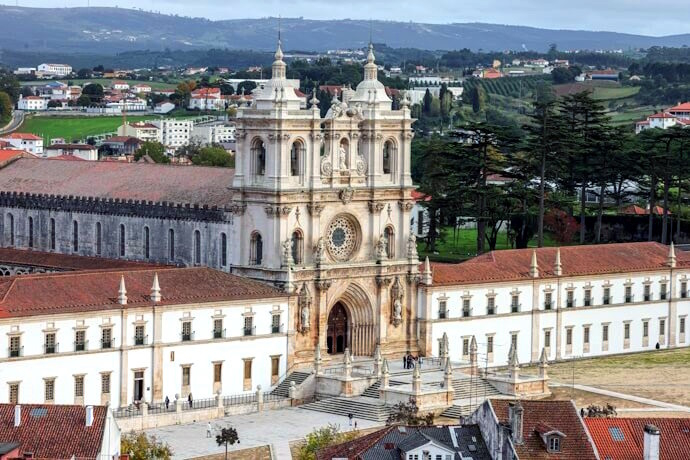
Less than an hour and a half south from Coimbra is the town of Alcobaça and its striking monastery, a UNESCO World Heritage Site that stands as one of Portugal’s most awe-inspiring medieval landmarks. This Cistercian monastery is renowned for its monumental Gothic architecture and the tragic love story of King Pedro I and Inês de Castro, which echoes through its hallowed halls.
Founded in 1153 by King Afonso I as a gift to the Cistercian Order, the monastery quickly became one of the most important religious centres in Portugal. Its majestic church, one of the largest in the country, is a masterpiece of simplicity and grandeur and its central nave, flooded with natural light, is a perfect example of early Gothic design, with minimal decoration that reflects the Cistercian values of austerity and devotion.
4. Pena Palace

Welcome to Sintra, known as the fairytale land of Portugal! A visit to the Pena Palace will quickly show you why it has earned this enchanting title. Perched dramatically on a hilltop overlooking the lush forests of Sintra, Pena Palace is one of Portugal’s most alluring and iconic landmarks. This vibrant, fairytale-like palace, with its colourful towers and mix of architectural styles, is a stunning example of 19th-century Romanticism and offers a magical journey into the past.
As you approach the palace, its exterior alone is stunning, with sweeping views of the surrounding Sintra Mountains and the Atlantic Ocean in the distance. But it is inside the palace where the royal opulence truly shines. Immerse yourself fully in the magic of Pena Palace and let the palace's majestic atmosphere transport you to a royal world of dreams!
5. Quinta da Regaleira
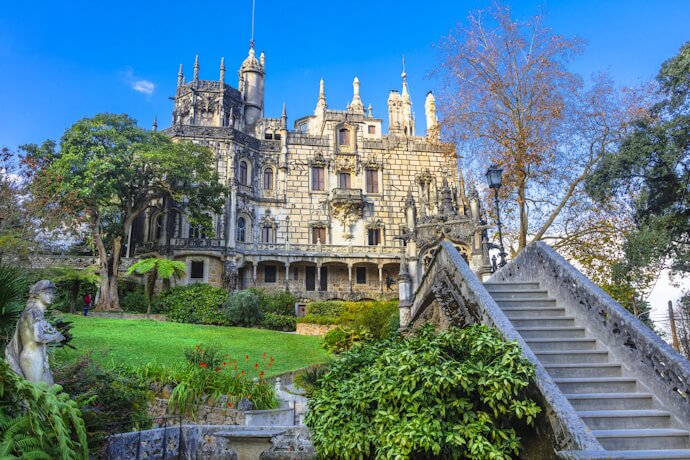
After the Pena Palace, it is time to switch up the scenery and visit Quinta da Regaleira, a place where history, art and esotericism blend seamlessly. This enchanting property feels like it was plucked straight from a fantasy novel. With its lush gardens, hidden tunnels and intricate symbolism, Quinta da Regaleira invites you to embark on a journey of discovery and wonder.
The palace itself is a masterpiece of intricate stone carvings, turrets and ornate detailing. But it is the gardens that truly make Quinta da Regaleira a magical experience. Designed as a symbolic journey through life, the gardens are filled with winding paths, hidden grottoes and secret passageways. The estate’s most famous feature is the Initiation Well, a deep spiral staircase that descends into the earth, symbolizing a journey of enlightenment and self-discovery.
6. Jerónimos Monastery
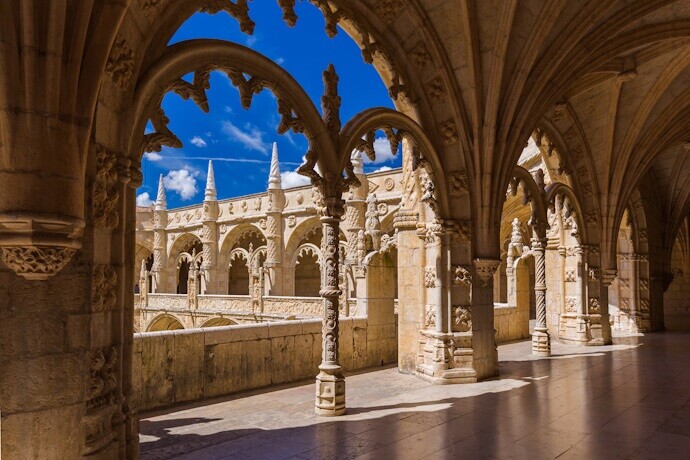
You have now reached Lisbon, a true paradise for history lovers! And a great first stop would be Belém, where you can visit several historic landmarks. The first should be the Jerónimos Monastery, a magnificent symbol of Portugal’s Age of Discoveries. This stunning 16th-century monastery is a masterpiece of Manueline architecture, a Portuguese Gothic style marked by its intricate maritime motifs and ornate stonework.
The exterior is adorned with nautical elements - ropes, anchors and sea creatures - that reflect Portugal’s seafaring history, as well as statues of saints and biblical figures, all carved in exquisite detail. Inside, the monastery continues to impress with its breathtaking cloisters, often considered some of the most beautiful in the world. Each corner and corridor is filled with Manueline details that captivate the eye, creating a peaceful yet awe-inspiring atmosphere.
7. Belém Tower
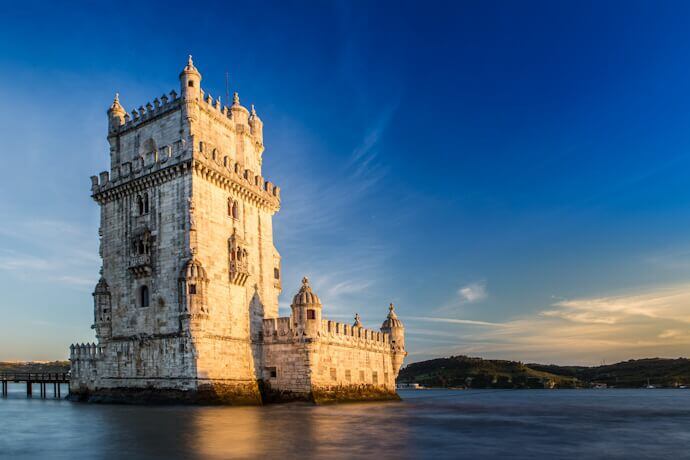
Only a few minutes away from the Monastery is the Belém Tower, another symbol of Portugal’s rich maritime history. Standing proudly at the edge of the Tagus River, this UNESCO World Heritage Site was built in the early 16th century as a defensive fortress and a ceremonial gateway to the city.
From the outside, you can appreciate its beautiful setting along the waterfront, where the tranquil waters of the Tagus River meet the vastness of the Atlantic Ocean. The stunning views from the tower provide a sense of the importance of this strategic location in Portugal's maritime history. Inside, the stone walls whisper tales of the explorers who once sailed from this very spot, setting forth on adventures that would shape the world.
8. Castle of São Jorge
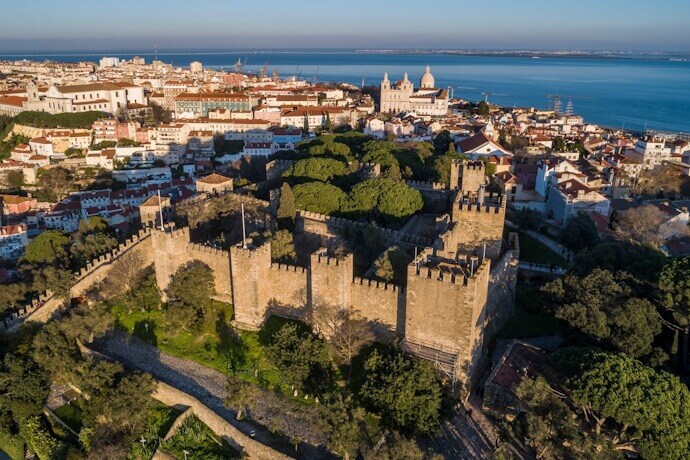
Perched atop one of Lisbon’s seven hills, the Castle of São Jorge is a majestic fortress built in the 11th century that has played a significant role in Lisbon's development and remains a symbol of resilience and strength to this day. The castle’s strategic location serves as a vantage point from which you can see the sprawling city below. The views from the ramparts are nothing short of breathtaking, especially at sunset when the city is bathed in warm hues.
The courtyard is a peaceful area where you can wander among ancient trees and enjoy the tranquil atmosphere. Various exhibitions and informative panels throughout the site recount the castle's past, from its origins as a Moorish stronghold to its significance in the reconquest by King Afonso Henriques in 1147.
9. Roman Temple of Évora
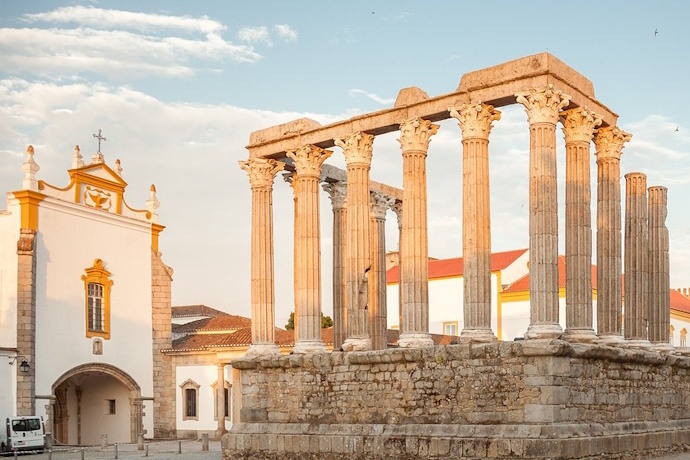
The Alentejo region is worth a visit as well when it comes to history, especially the city of Évora. Right in the centre of the city you will find the Roman Temple of Évora, also known as the Temple of Diana, which stands as a remarkable testament to the rich historical and architectural legacy of Portugal. This UNESCO World Heritage Site dates back to the 1st century AD, during the height of the Roman Empire and is one of the best-preserved Roman ruins in the country.
It is believed that this temple was a place of worship and community gathering for the Roman inhabitants of Évora and dedicated to the goddess Diana. The impressive remains consist of a series of elegant Corinthian columns, standing tall against the backdrop of the modern city. The temple’s intricate marble details and finely crafted stonework exemplify the skill and artistry of Roman engineering.
10. Chapel of Bones

The number 10 on this list is the Chapel of Bones, one of the most intriguing and haunting sites in Portugal. Nestled within the Church of St. Francis, this unique chapel is a remarkable example of the Baroque style and serves as a poignant reminder of the transience of life.
Built in the late 16th century, the Chapel of Bones was created by Franciscan monks as a space for contemplation and reflection on mortality. As you step inside, the sight is both eerie and captivating, a visual representation of the saying, “We bones that are here await yours.” This chilling phrase serves as a reminder of the inevitability of death and the importance of living a virtuous life. The chapel’s dim lighting and solemn atmosphere enhance the experience, inviting you to pause and reflect on the fragility of existence.
Uncover the history behind ancient landmarks
Portugal is a vibrant tapestry where history comes to life, seamlessly intertwining centuries of culture, exploration, and architectural splendor - from majestic castles and serene monasteries to enchanting estates and ancient ruins. Whether you are a history enthusiast or simply seeking magnificent vistas, we welcome you to visit Portugal and include these 10 remarkable historical sites scattered across the country, that promise to captivate your imagination and leave you in awe!


